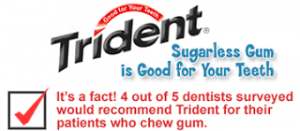One of the best practices of top brands such as Coca-Cola, Nike or American Express is that they make a regular practice of reviewing and renewing their commitment to brand identity ever year. Most companies, especially in the healthcare space, make a big show of developing a brand identity at launch, only to make it the last time they ever think about it again until something goes wrong. It’s 2018! Time to make some New Year’s resolutions about how you can boost your brand’s identity this year.
- Create a sponsorship or movement campaign: brands spend a lot of time thinking about how they look or what they say and often neglect the central means by which a brand experience gets delivered—how they behave. If your brand wished to sponsor a cause, what cause would logically follow given your brand’s identity? It could come in one of two forms: 1. putting money and promotion to build a deeper association between a cause’s equity and that of your own brand; or 2. creating a parallel behavior linked to your brand that’s tapped into the popular psyche.
 Proctor & Gamble made a huge splash by sponsoring the mother’s of Olympic athletes for the London games in 2012 and earned an estimated $500 million in additional profits. The venture was so successful, they’ve signed up for the next five Olympics. And it doesn’t have to have to be such a huge effort on a global scale. Think Little League, or your Alma matter’s college athletics program, or even the idea of activity for the sake of exercise, like running or swimming. A movement campaign is a bit more complicated but proven to raise both brand value and awareness.
Proctor & Gamble made a huge splash by sponsoring the mother’s of Olympic athletes for the London games in 2012 and earned an estimated $500 million in additional profits. The venture was so successful, they’ve signed up for the next five Olympics. And it doesn’t have to have to be such a huge effort on a global scale. Think Little League, or your Alma matter’s college athletics program, or even the idea of activity for the sake of exercise, like running or swimming. A movement campaign is a bit more complicated but proven to raise both brand value and awareness.  Bombas, a new brand of socks, used the social problem of homelessness to tap into consumer’s psyche. Socks are the number one requested clothing item among the homeless, so for every pair they sell, they donate a pair to a homeless shelter. Even something as generic as socks suddenly gains a boost in brand identity, not to mention sales of over 5 million pairs to date.
Bombas, a new brand of socks, used the social problem of homelessness to tap into consumer’s psyche. Socks are the number one requested clothing item among the homeless, so for every pair they sell, they donate a pair to a homeless shelter. Even something as generic as socks suddenly gains a boost in brand identity, not to mention sales of over 5 million pairs to date. - Survey your audience to learn where your brand stands with them: Most brands do extensive research at launch, and maybe even market research around their advertising campaigns, but preciously little branding research. Branding research differs from standard market research by getting at the “whys” behind your value to customers. Instead of asking how often a brand gets used, or what people like most about your brand, focus instead on your customers. Branding research would ask things like: Our brand is to your life as _______is to_________. Or If you were a superhero, what special powers would our brand give you? The answers to these types of questions paint a vivid picture of exactly how your brand fits into customer’s lives; and more importantly, what is the personality of your brand in their minds. It may turn out to be very different than you think.
- Audit your competition to look for new openings: Your brand doesn’t exist in a vacuum. There are many other brands and brand managers struggling in the same way as you to steal share of voice and mind in the market. Don’t just look at what they are doing; really examine the “whys” behind what they are doing. It will reveal what they are shooting for in brand equity, and what gaps they are leaving open for your brand to grab and own.
 Trident famously carved an indelible niche in the commoditized gum marketplace by paying close attention to what the competition wasn’t. While other gums were focused on flavor, fun or fresh breath, Trident took advantage of the dental hygiene market and created a brand equity around better tooth and gum health. The 4-out-of-5 dentists recommendation wasn’t an accident, but rather a concerted effort to distinguish Trident’s brand based on playing in the gaps left open by the competition.
Trident famously carved an indelible niche in the commoditized gum marketplace by paying close attention to what the competition wasn’t. While other gums were focused on flavor, fun or fresh breath, Trident took advantage of the dental hygiene market and created a brand equity around better tooth and gum health. The 4-out-of-5 dentists recommendation wasn’t an accident, but rather a concerted effort to distinguish Trident’s brand based on playing in the gaps left open by the competition. - Review all your communications through the lens of your branding strategy: Companies spend vast sums of money and time building what are known as Brand Books—documents that outline the visual, verbal and behavioral habits of a brand’s essence. Yet once the ad campaigns start, these books fade farther and father into memory as the brand team focuses on promotion over branding (which are two different disciplines, the former supposedly deriving from the latter).
 Look what happened to Taco Bell back in the late 90s when it fell in love with the talking Chihuahua that would always beg for Taco Bell food. The advertising campaign was one of the most popular in the brand’s history. The problem? Taco Bell’s brand strategy was “a fun alternative to burgers and fries.” Instead, a survey of the audience revealed that the takeaway strategy—and the brand’s equity—turned out to be “dog food” in the minds of customers, and sales fell badly. So crack open your Brand Book, review your brand strategy, and review your current marketing and promotion plans through that lens. Brands that stray from the strategy also stray from their customers’ loyalty and esteem.
Look what happened to Taco Bell back in the late 90s when it fell in love with the talking Chihuahua that would always beg for Taco Bell food. The advertising campaign was one of the most popular in the brand’s history. The problem? Taco Bell’s brand strategy was “a fun alternative to burgers and fries.” Instead, a survey of the audience revealed that the takeaway strategy—and the brand’s equity—turned out to be “dog food” in the minds of customers, and sales fell badly. So crack open your Brand Book, review your brand strategy, and review your current marketing and promotion plans through that lens. Brands that stray from the strategy also stray from their customers’ loyalty and esteem. - Convene a meeting between sales and marketing to see if they’re on the same page: Believe it or not, sales teams—the people who are advocating for your brand—and marketing teams—the people coming up with the materials to promote and sell—rarely come together to assess their mutual understanding of the brand. In most companies, especially in healthcare, the two bodies operate almost autonomously. The sales teams get caught up in making quotas and will do anything to achieve them, even if it means straying from the brand identity. And the marketing teams rarely gauge the pulse of point of sale, and end up talking to themselves in the process. If your brand is all about reassurance and helpfulness and intuitive understanding, better make sure its not getting the hard, aggressive sell. Convene regular summits between the sales and marketing arms to make sure that both groups are promoting the same brand equity. If they don’t agree on the same brand experience, then the customers never will and look for a brand that’s not schizophrenic.
The New Year offers a great time to take charge of your brand once again. Why not make it an annual ritual to follow these five simple steps above to keep your brand equity not only impactful, but also highly consistent as well in the minds of your customers. They’ll reward you with continued sales and loyalty. Happy New Year indeed!
